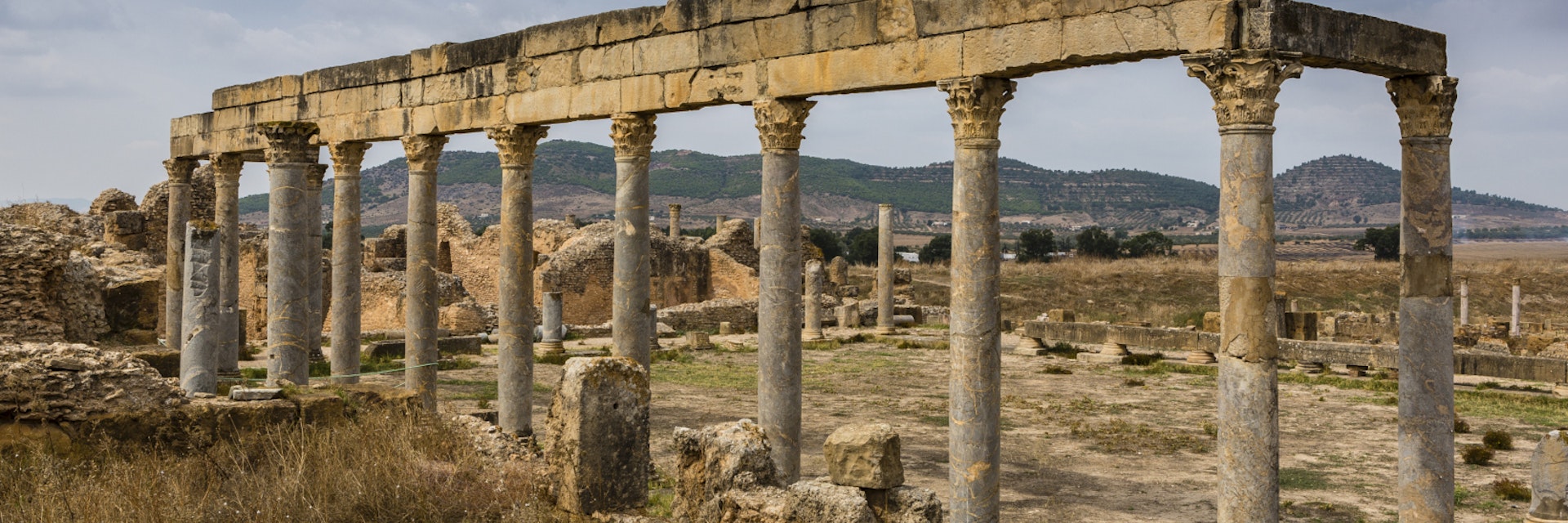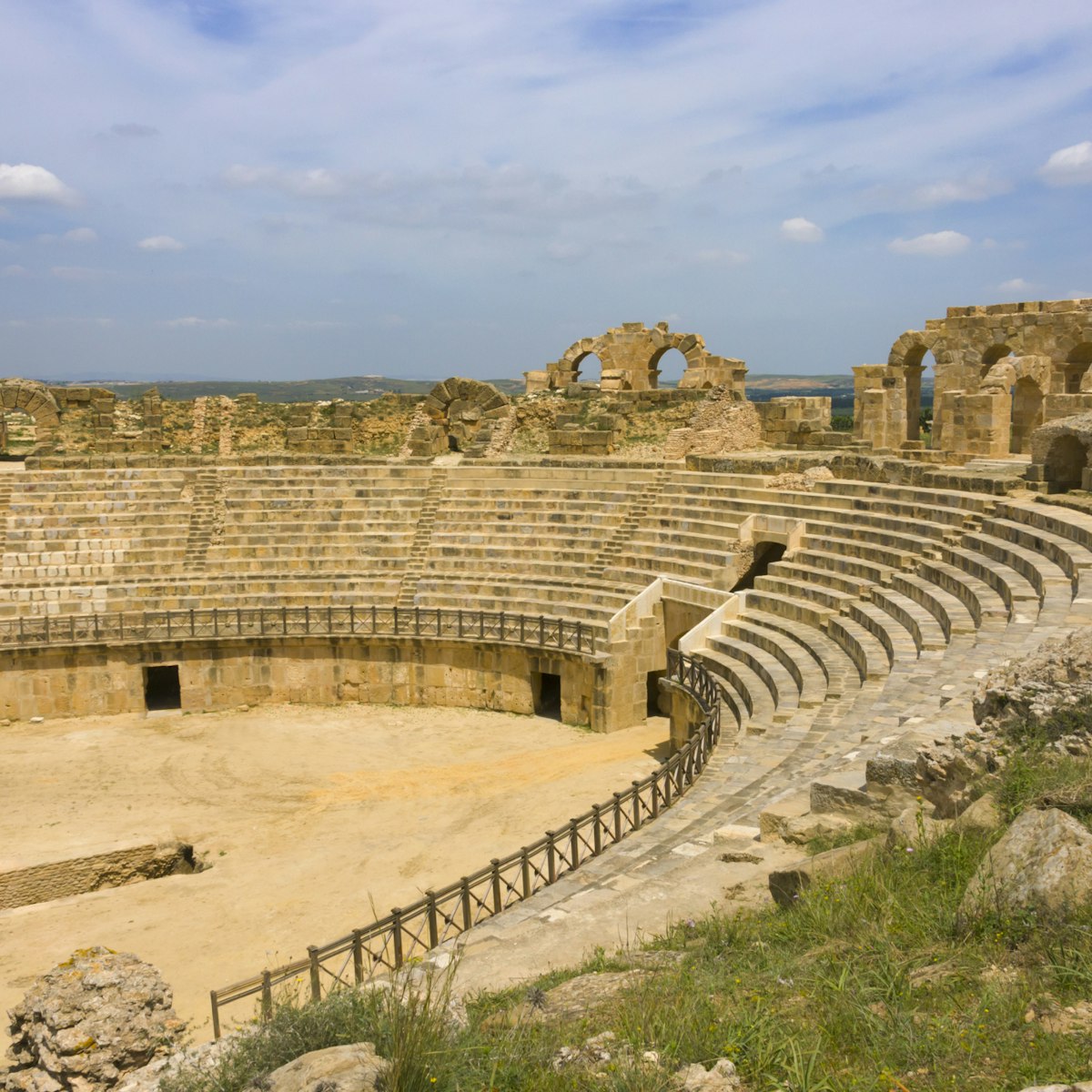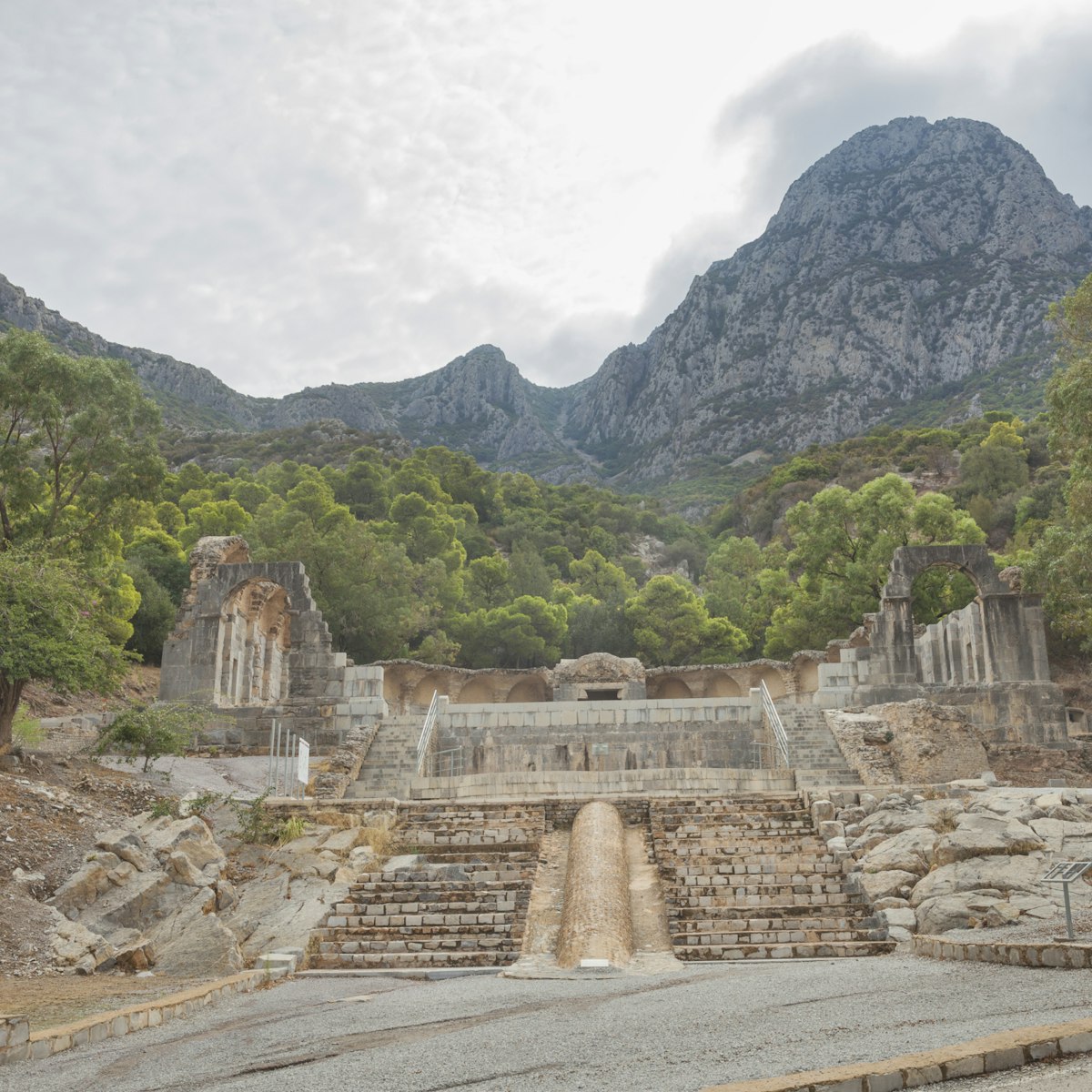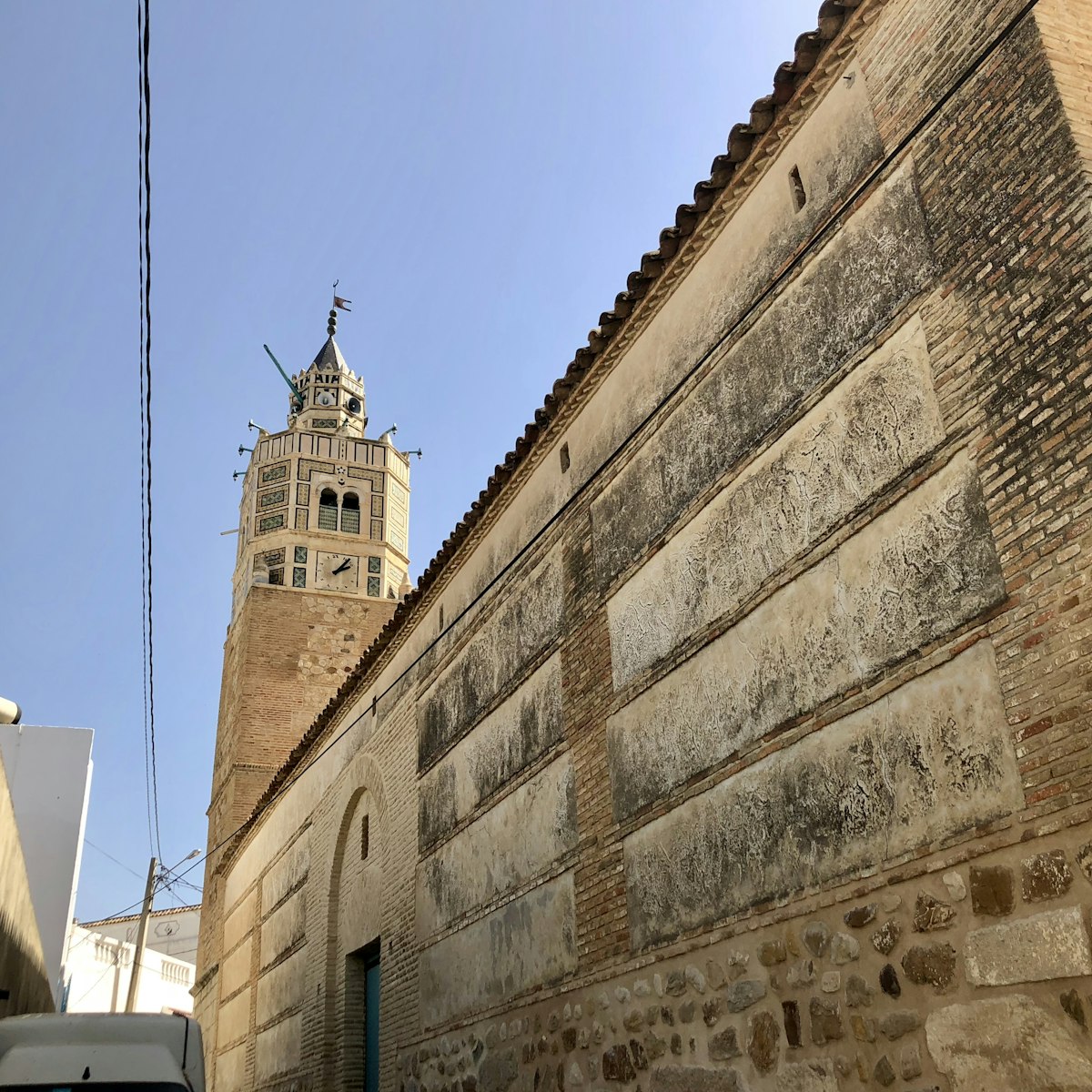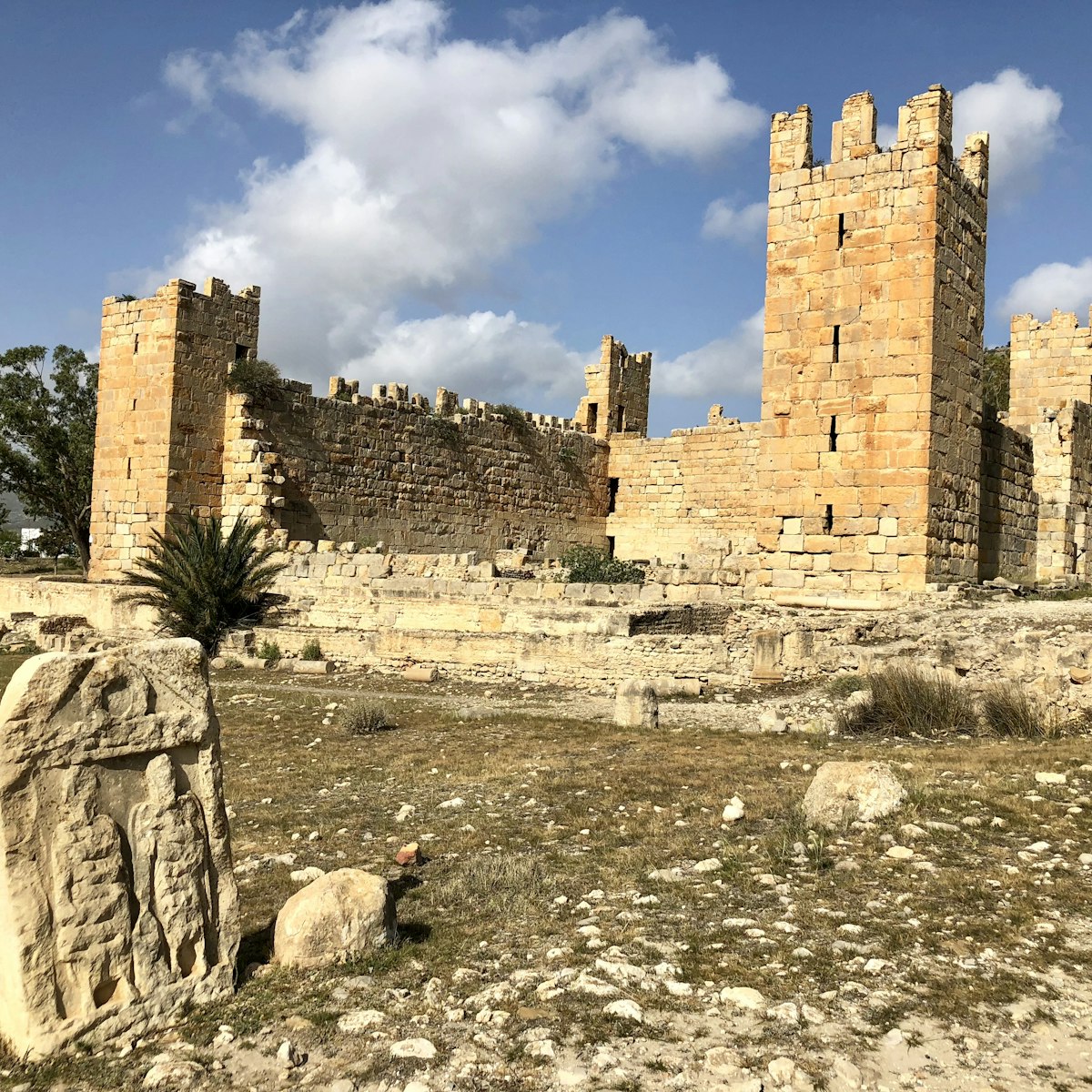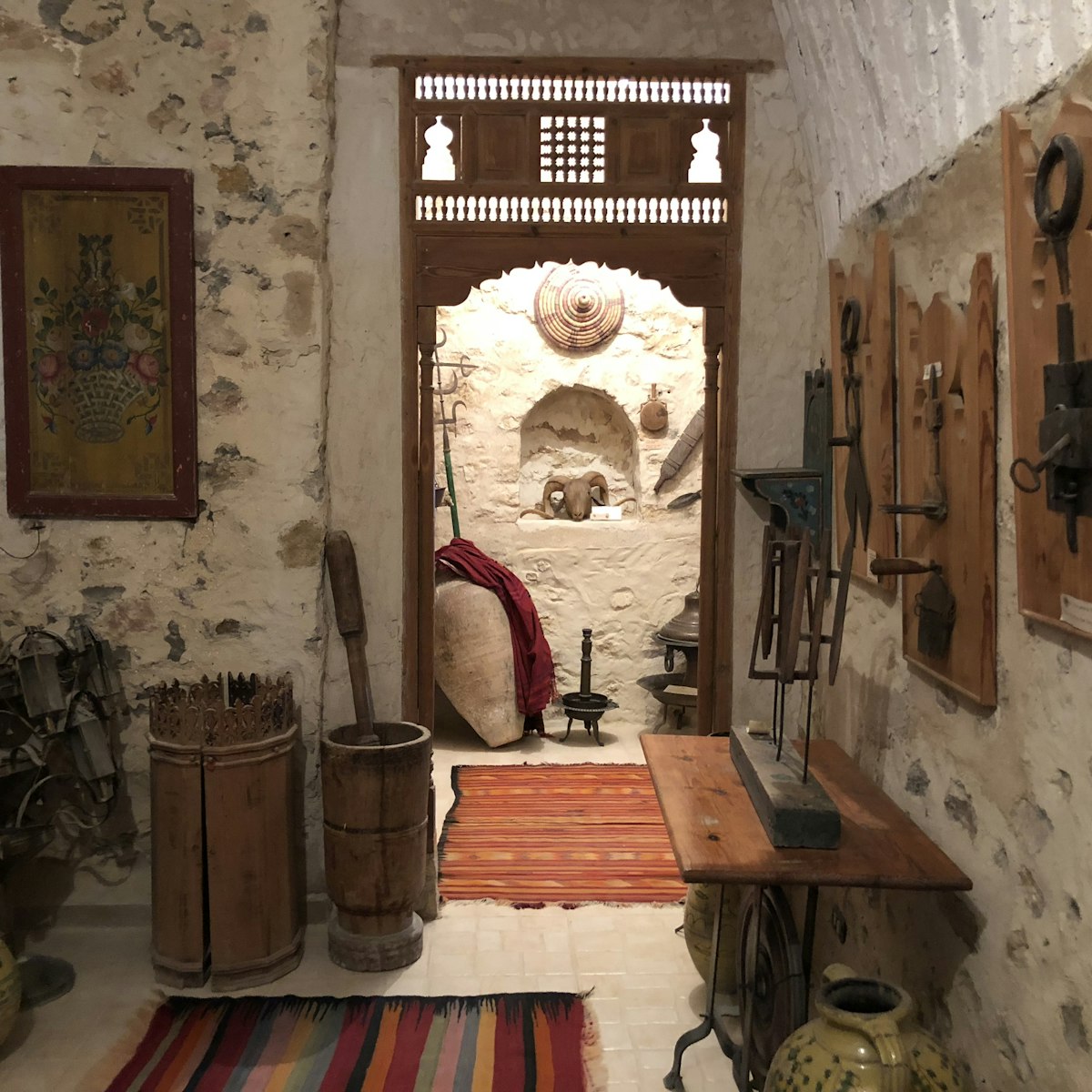Surrounded by shimmering wheat fields and olive groves like those that made its fortune, Thuburbo Majus has a prosperous air even in its ruinous state. In the 2nd century, this Roman colony for war veterans had 10,000 inhabitants, the wealthiest of whom tried to outdo each other by donating public buildings and fine mosaics; many of the latter are now in Tunis' Bardo Museum. Its appealing Capitole, with four full-length fluted Corinthian columns, dominates the site.
It's tempting to make a dash straight for the grand Capitole, but first take a look at the Byzantine House of the Oil Press. In the Capitole's cellar, you can clearly see a massive circular press made from stone that drains into what used to be a Roman-era bathing pool.
On a platform looming over the surrounding residential ruins is the unmissable Capitole, with four giant reconstructed pillars of veined pink marble marking the entrance to the temple, which honours the Capitoline Triad: Jupiter, the king of the gods; Juno, his wife; and their daughter Minerva, the goddess of wisdom. Built in AD 168, it is reached by a wide flight of stairs leading up from the forum (AD 161–2), which is colonnaded on three sides. A giant sandalled foot and head of an enormous statue of Jupiter, estimated to have stood 7.5m high, were found here.
The Temple of Peace, northeast of the forum, holds a few stone bas-reliefs, including one of Pegasus.
On the southwestern side of the forum, the unusual Temple of Mercury, with a circular design, was dedicated to the god of merchants and abuts the market. The market stalls can be discerned on three sides of the courtyard below the temple.
Directly behind the market is a very un-Roman tangle of residential streets, obviously laid out before their arrival. Beyond is the spacious House of Neptune, with some impressive geometric-patterned mosaics.
To the east are the wonderful porticoes of the Palaestra of the Petronii, named after the family of Petronius Felix, who paid for the construction of this gymnasium complex in AD 225. It was surrounded by Corinthian columns made of an unusual yellow-veined grey marble; one row remains standing (supported by scaffolding), still holding aloft a Latin inscription. In the southeastern corner, some letters are carved into the floor, part of a game used to learn the alphabet.
Conveniently placed next to the palaestra for a post-gym wash is the huge Summer Baths complex, which covers 2800 sq metres. Although larger, they aren't as well preserved as the Winter Baths, 150m to the east, which have a grand entrance flanked by pockmarked, veined marble columns. Both were full of mosaics – the finest are now on display in the Bardo, though some geometric patterns can still be seen in situ.
About 50m south of the Winter Baths, the Sanctuary of Baal is a small square temple that’s easily identified by the two yellow-veined grey pillars atop its steps. It was dedicated to the Punic god Baal Hammon, whose cult survived (in Romanised form) long after the fall of Carthage.
The adjacent Sanctuary of Caelestis, reached through a freestanding yellow-stone arch, was for another adapted god – this time the Roman version of the Punic goddess Tanit, the wife of Baal Hammon. The temple was later converted into a Byzantine church, traces of which can still be seen.
A rough path leads southeast from the Sanctuary of Baal towards the ruins of massive, arched cisterns set into the hill that once supplied the town with water. The mound beyond the cisterns marks the site of a small amphitheatre, which has not been fully excavated. The Roman version of recycling is obvious here: stones with unrelated Latin inscriptions have been turned upside down to help shore up the base of the structure. Another rough path through prickly plants leads north from here to a low hill topped by the remains of the Temple of Saturn, though not much has been uncovered.
Wall panels near the ticket office provide background details in Arabic, English and French, and there are a few signs with minimal information around the site.
Thuburbo Majus makes an easy day trip from Tunis. There is no public transport directly to the site, but buses travelling between Tunis and Kairouan can drop you at the turn-off, leaving a 1km walk to the entrance.
